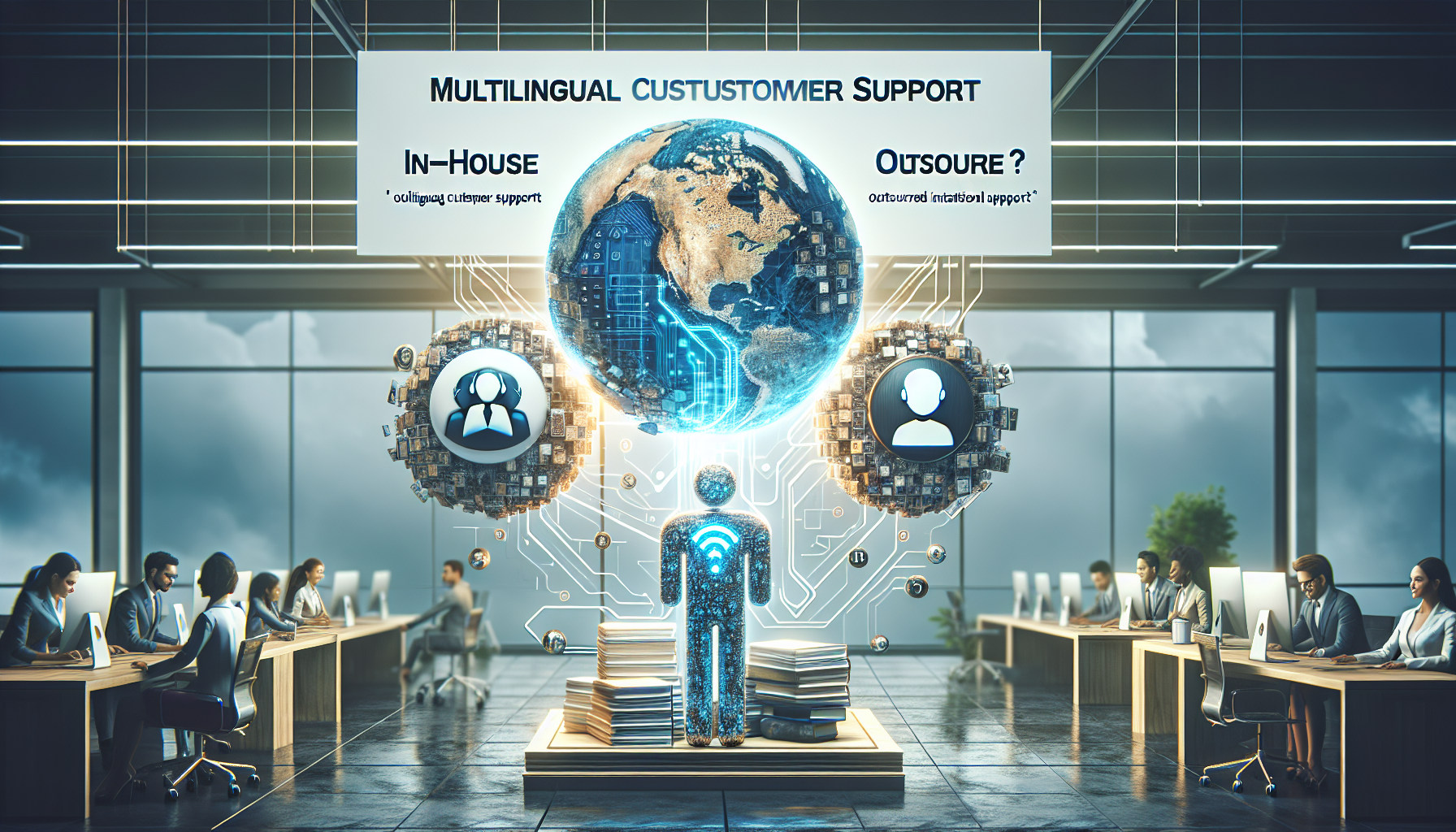Multilingual Customer Support: In-house, Outsource, Or AI?
Introduction
In today's globalized market, providing multilingual customer support is no longer a luxury, but a necessity. Companies must decide between in-house, outsourced, or AI-driven multilingual customer support to cater to their diverse customer base. Each approach has its advantages and disadvantages, and a hybrid model is increasingly popular among organizations seeking to balance efficiency and customer experience.
The Options: In-house, Outsourcing, AI-powered, and Hybrid
When evaluating the options, companies must consider factors such as cost, scalability, quality, and operational complexity.
In-house Multilingual Customer Support
In-house teams provide the most control and brand alignment, allowing companies to maintain their unique voice and culture. However, this approach comes with high recruitment, training, and payroll costs, making it difficult to scale quickly and cover 24/7 support in multiple languages.
Outsourced Multilingual Customer Support
Outsourcing offers access to global talent and language coverage, scalability, and cost savings on infrastructure and hiring. However, companies risk losing some quality control and brand consistency, and may experience cultural or language mismatches.
AI-powered Multilingual Customer Support
AI solutions provide instant, 24/7 multilingual support, are cost-effective for routine queries, and scale easily to new languages. However, AI may struggle with complex or sensitive issues, miss cultural nuances, and require up-to-date training and quality assurance.
Hybrid Multilingual Customer Support
A hybrid approach combines the strengths of all models, optimizing workload and cost, and offering flexibility, scalability, and resilience. However, this model introduces significant operational complexity, requiring investment in vendor management, IT, and quality assurance.
Best Practices for Multilingual Support
To ensure effective multilingual customer support, companies can:
- Use AI-powered chatbots with real-time translation for instant, basic support in many languages, as seen in Augmented AI: Meaning and Real-Life Examples | 2025.
- Hire or contract multilingual agents for complex, high-value interactions.
- Build a multilingual knowledge base for self-service.
- Integrate translation technology with support tools for seamless, scalable support operations.
Choosing the Right Approach
The right choice depends on business size, target markets, budget, and the complexity of support needs. A hybrid model often delivers the best balance of quality, scalability, and cost-effectiveness for global customer support. By understanding the pros and cons of each approach, companies can create a tailored solution that meets their unique needs and provides an exceptional customer experience.
Conclusion
In the era of global commerce, multilingual customer support is crucial for businesses to thrive. By weighing the advantages and disadvantages of in-house, outsourced, AI-powered, and hybrid models, companies can make informed decisions about their customer support strategy. Remember, the key to success lies in finding the perfect balance between quality, scalability, and cost-effectiveness.
Read Next
- Federated Learning: How Privacy-Preserving AI Is Revolutionizing Data Collaboration
- Demystifying GPT Models: Leveraging Advanced AI for Business Innovation
- How AI Email Campaign Optimization Boosts SaaS Conversions
- Advanced Large Language Models (LLMs): New versions like GPT-4.5, Claude 4.0 and Mistral Large 2 are pushing boundaries
- Retail Chatbots for Businesses - 2025

